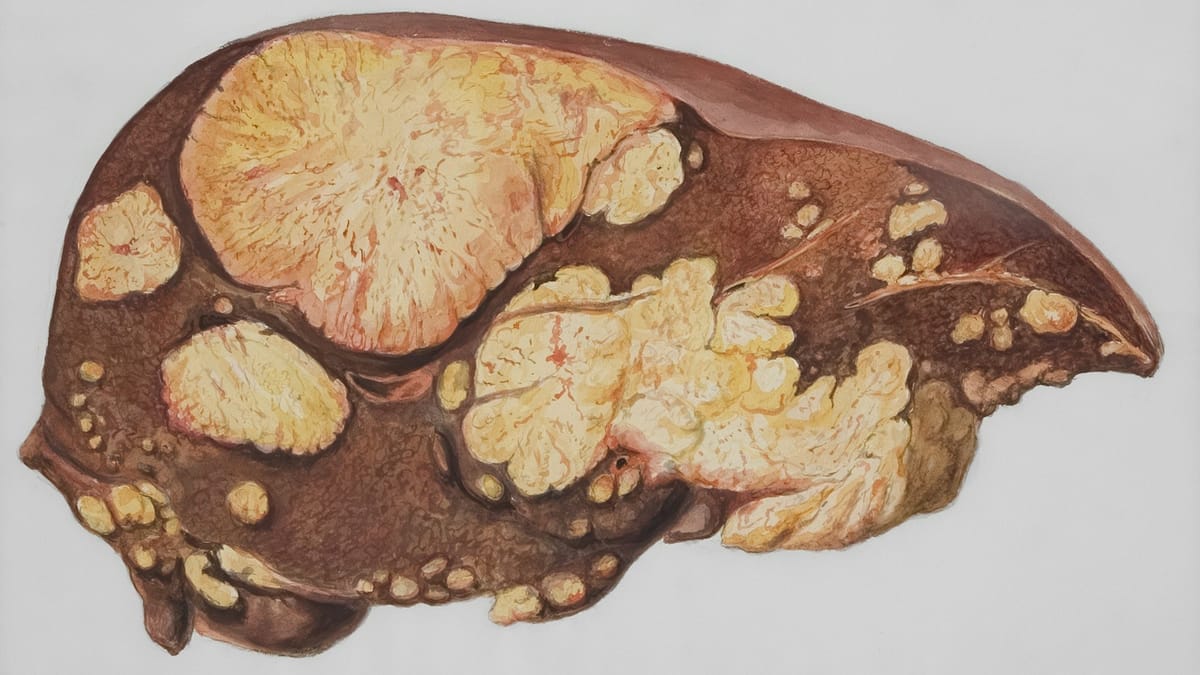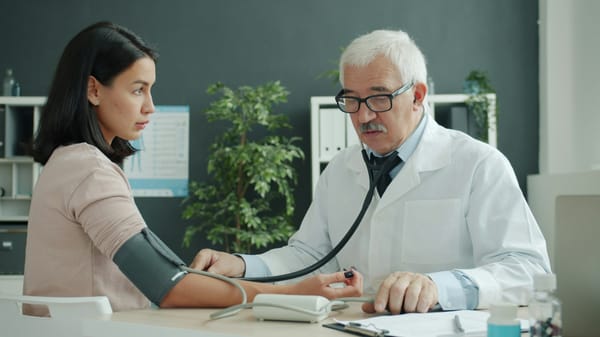Kidney Stones in Women: Symptoms, Risks, Prevention, and When to Seek Help
Did you know that 1 in 10 people will develop a kidney stone in their lifetime? For women, certain types are more common and often linked to UTIs. Discover the signs, causes, and prevention strategies in this guide.

1 in 10 people will develop a kidney stone in their lifetime, and women face unique risks because certain infection-related stones are more common in females. What if a few simple habits could slash your chances?
Kidney stones can derail your day, and, if ignored, your health. These hard mineral deposits form when urine becomes too concentrated with salts and other substances, triggering crystals that clump into stones. For women, dehydration, diet, and urinary tract infections (UTIs) play an outsized role, and the pain can be brutal: sharp waves from the side or back that may shoot to the lower abdomen or groin. The good news? With the right information, most stones can be prevented or managed early. In this guide, you’ll learn the types of stones (and why some target women), the red-flag symptoms to watch for, how doctors diagnose and treat them, and the smart, science-backed steps to keep stones from coming back.
Kidney Stones 101: What They Are, Types, and Who Gets Them
Kidney stones, also known as nephrolithiasis, are solid deposits that form in the kidneys when the natural chemistry of urine becomes unbalanced. Normally, urine contains substances that prevent crystals from sticking together, but when there is too little water or an excess of stone-forming minerals, such as calcium, oxalate, or uric acid, these protective mechanisms fail. Crystals begin to form, cluster together, and gradually harden into stones. The size of a kidney stone can range from tiny grains of sand that pass unnoticed to larger formations that block the urinary tract, causing intense pain and complications.
There are four primary types of kidney stones, each associated with different causes. Calcium oxalate stones are the most common, often developing when high levels of calcium and oxalate meet in concentrated urine. Uric acid stones occur in people whose urine remains persistently acidic, which can be the result of dehydration or diets rich in animal proteins, seafood, and sugary foods. Cystine stones are much rarer and stem from a genetic disorder called cystinuria, which causes the kidneys to excrete too much of the amino acid cystine. Struvite stones, on the other hand, are more often seen in women because they typically form after urinary tract infections (UTIs). These infection-related stones can grow rapidly and sometimes lead to serious kidney damage if untreated.
The prevalence of kidney stones illustrates how common the condition is. According to the U.S. National Institute of Diabetes and Digestive and Kidney Diseases (NIDDK), about 1 in 10 people will experience a kidney stone at some point in their life. By the age of 70, the risk increases to roughly 1 in 5. Stones most frequently occur in people between the ages of 40 and 60, though they can develop at any age. Demographics also play a role. Men are more likely overall to develop kidney stones, with a male-to-female ratio of about 3:2, but women face a higher likelihood of struvite stones due to their greater susceptibility to urinary infections. Racial differences have also been observed: white individuals are approximately twice as likely as Black individuals to form stones.
The age-specific risk paints a striking picture of how chances rise over time. Between 20 and 30 years old, only about 1 in 100 people are affected. By the 30s, the figure jumps to 1 in 50. Entering the 40s, risk increases sharply to 1 in 20, and by the 50s, it climbs further to 1 in 10. In the 60s, the likelihood is 1 in 5, and by the 70s, as many as 1 in 3 people will have had at least one kidney stone. These numbers emphasize that kidney stones are not only a possibility but a common reality, particularly as people age.
How Kidney Stones Show Up in Women: Symptoms, Risks, and Root Causes
Kidney stones can be deceptive in women, often mimicking other health issues such as urinary tract infections or gynecological conditions. Recognizing the hallmark signs early can make the difference between managing stones at home and needing urgent medical intervention.
Common symptoms usually begin with severe, cramping pain in the side or back under the ribs, which may radiate toward the lower abdomen or groin. This pain often comes in waves, reflecting the stone’s movement. Women may also experience nausea, vomiting, and painful urination, sometimes coupled with an urgent or frequent need to use the bathroom. Another warning sign is hematuria—blood in the urine—appearing pink, red, or brown. When accompanied by fever and chills, a stone may be complicated by infection, and immediate medical care becomes critical.
Several lifestyle and health risk factors raise a woman’s chance of developing kidney stones. Dehydration is the leading culprit: insufficient fluid intake concentrates stone-forming minerals, making them more likely to crystallize. Diets high in animal protein, sodium, and sugar also contribute, as they alter urine chemistry. Obesity is another driver, linked to changes in calcium and uric acid balance. A family history of stones can increase risk, while certain medical conditions—including kidney disease, gout, and inflammatory bowel disease (IBD) like Crohn’s or ulcerative colitis—further predispose women. Even medications such as some diuretics or calcium supplements can play a role, though the risk depends on dose and medical need.
Beyond risk factors, several underlying conditions create stones through specific mechanisms. For example, hyperparathyroidism causes excess calcium in the blood and urine, leading to calcium-based stones. In gout, elevated uric acid promotes uric acid stone formation. Women with IBD or malabsorption syndromes face increased urinary oxalate and dehydration from chronic diarrhea, both of which favor stone development. Similarly, chronic kidney disease or polycystic kidney disease disrupt normal urine chemistry, paving the way for stones. A rarer genetic disorder, cystinuria, results in excess cystine in the urine and recurrent cystine stones.
For women, kidney stones represent a convergence of lifestyle, genetics, and systemic health. Understanding the symptoms, risk factors, and root causes equips women to spot problems early and discuss tailored prevention strategies with their healthcare providers.
Diagnosis, Treatment, and Complications: What to Expect
When kidney stones are suspected, getting the right diagnosis quickly is essential. The evaluation typically begins with imaging tests, such as an ultrasound, X-ray, or CT scan, to confirm the presence, location, and size of the stone. Among these, CT scans are the most accurate, but ultrasound is often used first, especially in women, to minimize radiation exposure. Alongside imaging, a urinalysis may be ordered to check for blood, crystals, infection, or changes in pH that suggest certain stone types. Blood tests help assess kidney function and identify contributing factors, such as elevated calcium or uric acid levels, that may guide treatment and prevention.
Treatment options depend on the stone’s size, location, the presence of infection, and the level of pain. For small stones, the first step is often pain control, usually with anti-inflammatory medications or other pain relievers. Hydration plays a central role, as drinking large amounts of water helps flush the stone naturally. In some cases, medical expulsion therapy is prescribed, medications that relax the ureter, making it easier for the stone to pass.
When stones are too large, stuck, or complicated by infection, procedures or surgery may be necessary. Common approaches include shock-wave lithotripsy, which uses sound waves to break stones into smaller fragments; ureteroscopy with laser lithotripsy, where a thin scope is passed through the urinary tract to directly fragment or remove the stone; and, for very large or complex stones, percutaneous nephrolithotomy, a minimally invasive surgical option. These treatments are highly effective but usually reserved for stones that cannot be managed conservatively.
Recognizing and addressing potential complications is crucial. A stone that obstructs urine flow can cause kidney damage if untreated. If infection develops on top of a blockage, the risk of sepsis, a life-threatening infection, rises sharply, making emergency care vital. Even after successful treatment, some women experience recurrent stones, especially without tailored prevention strategies.
Special attention is needed when kidney stones occur alongside other health conditions. Women with chronic kidney disease, diabetes, gout, inflammatory bowel disease, or recurrent urinary tract infections may require a more individualized approach. In these cases, healthcare providers often adjust imaging frequency, medication choices, and dietary advice to reduce the risk of recurrence and protect overall kidney health.
In short, while kidney stones can be painful and disruptive, timely diagnosis and appropriate treatment not only relieve symptoms but also safeguard long-term kidney function.
Prevention, Genetics, and Your Care Team
When it comes to kidney stones, prevention is always better than treatment. The most effective strategy starts with hydration, drinking enough water to keep your urine a pale-yellow color. This helps dilute stone-forming minerals and makes stones less likely to form. A balanced diet is equally important: limiting animal protein, sodium, and added sugars can lower stone risk, while keeping calcium intake steady (not too low, not too high) supports healthy urine chemistry.
Regular movement and maintaining a healthy weight add another layer of protection, as obesity is a known risk factor. For those with underlying health issues like gout, inflammatory bowel disease, or kidney disease, close management with a healthcare team reduces both stone formation and recurrence. If you’ve had stones before, it’s also wise to review any medications or supplements with your clinician to ensure they’re not contributing to stone risk.
Genetics also plays a role, though it does not seal your fate. Certain gene variants have been linked to specific stone types. For example, SLC3A1 and SLC7A9 mutations cause cystinuria, which leads to recurrent cystine stones. Mutations in CLCN5 are tied to Dent disease, while OCRL1 mutations cause Lowe syndrome, both associated with kidney problems and stones. A defect in the APRT gene results in adenine phosphoribosyltransferase deficiency, another rare cause. Broader genetic syndromes such as cystinuria, Dent disease, Lowe syndrome, and primary hyperoxaluria also elevate stone risk. Still, a genetic predisposition only tilts the odds, it doesn’t make stones inevitable. Preventive strategies like hydration and diet remain powerful tools even for those at higher genetic risk.
Because kidney stones intersect with many aspects of health, care often involves a multidisciplinary team. Urologists are the specialists who perform procedures for stone removal and help plan prevention strategies. Nephrologists focus on kidney function, metabolic causes, and long-term prevention in more complex cases. Primary care physicians usually handle the first evaluation, provide pain management, and coordinate referrals.
Radiologists play a behind-the-scenes role by interpreting imaging scans to guide diagnosis and treatment decisions. In urgent situations, emergency physicians stabilize severe pain, vomiting, or infection until a specialist takes over. Beyond doctors, dietitians craft individualized nutrition plans, adjusting fluid intake, sodium, protein, and calcium/oxalate balance. Pharmacists, nurse practitioners, and physician assistants also support care by offering medication counseling, follow-up, and education.
Together, this team ensures that kidney stone management is not just about removing a stone, but about preventing future ones and protecting long-term kidney health.
The Pain That Sparked a Healthier Life
Samantha never thought much about kidney health, she was a busy 42-year-old teacher who prided herself on pushing through long days with little water and lots of coffee. One afternoon, while grading papers, she felt a sharp, cramping pain in her lower back. At first, she brushed it off as stress or muscle strain. But within hours, the pain grew unbearable, radiating down to her groin. She found herself doubled over, nauseated, and terrified.
At the ER, doctors confirmed it was a kidney stone. Samantha was shocked. She had always thought stones were something older men dealt with, not women like her. The urologist explained that her dehydration, high-salt diet, and family history had quietly set the stage. The stone was small enough to pass, but the process was agonizing. Every wave of pain was a reminder that her body had been giving her quiet warnings she had ignored for years. What stayed with her most wasn’t just the stone, it was the fear of recurrence. “One in five people my age will get another stone,” the doctor told her. Determined not to go through it again, Samantha made changes: she carried a water bottle everywhere, swapped processed snacks for fruit, and worked with a dietitian to balance her meals.
Months later, she felt stronger, not only because she was stone-free, but because she was finally listening to her body. For Samantha, the stone became a turning point, a painful but powerful wake-up call to care for her kidneys.
Your Top Questions Answered
- What are kidney stones?
Kidney stones are hard, mineral-based masses that form in the kidneys when certain substances in urine become too concentrated. These stones can vary in size and may remain in the kidney or travel down the urinary tract, potentially causing pain and discomfort.
- What causes kidney stones?
Several factors contribute to kidney stone formation, including dehydration, high salt intake, obesity, certain medical conditions (like gout and IBD), and a family history of stones. Dietary factors, such as high consumption of animal protein, sugar, and oxalate-rich foods, can also increase risk.
- How can I prevent kidney stones?
Prevention strategies include staying well-hydrated, consuming a balanced diet low in sodium and added sugars, maintaining a healthy weight, and managing underlying health conditions. Regular physical activity and avoiding excessive intake of stone-forming substances can also help reduce the risk.
- Can kidney stones be dissolved?
The ability to dissolve kidney stones depends on their composition. Uric acid stones can often be dissolved with medications that alkalinize the urine. However, most other types, like calcium oxalate stones, cannot be dissolved and may require other treatments.
- What are the symptoms of kidney stones?
Symptoms of kidney stones can include severe pain in the back or side, blood in the urine, nausea, vomiting, frequent urination, and cloudy or foul-smelling urine. Some stones may not cause symptoms until they move within the kidney or pass into the ureter.
Key Takeaways
- Kidney stones form when urine becomes concentrated with minerals, making crystallization and stone formation more likely.
- Women are particularly prone to struvite stones, which often develop after urinary tract infections.
- Calcium oxalate stones are the most common type, followed by uric acid, cystine, and struvite stones.
- Symptoms to watch for include severe side/back pain, nausea, blood in urine, and urinary urgency, with fever signaling possible infection.
- Dehydration, high-salt or high-protein diets, obesity, and family history significantly increase the risk of developing stones.
- Underlying health conditions such as kidney disease, gout, and inflammatory bowel disease can contribute to stone formation.
- Diagnosis relies on imaging (ultrasound, X-ray, CT), urinalysis, and blood tests to determine stone type and guide treatment.
- Treatment depends on stone size, location, and complications, ranging from hydration and pain management to medications and surgical procedures.
- Genetics can influence risk, with mutations like SLC3A1, SLC7A9, and APRT predisposing individuals to certain stone types, but lifestyle changes still reduce risk.
- Prevention is key: stay hydrated, maintain a balanced diet, exercise regularly, manage medical conditions, and work with a care team including urologists, nephrologists, and dietitians.
Conclusion
Kidney stones can be an unexpectedly painful and disruptive health issue, especially for women, but the good news is that most stones are preventable. Recognizing the early signs, such as sharp side or back pain, blood in the urine, nausea, or frequent urination, can make a huge difference in both treatment and recovery. Hydration is your first line of defense: drinking enough water to maintain pale-yellow urine helps dilute stone-forming minerals and reduces the risk of recurrence.
Women who have had urinary tract infections or carry other risk factors like obesity, high-sodium diets, or a family history of stones should be particularly vigilant. Partnering closely with a care team, including urologists, nephrologists, primary care physicians, and dietitians, ensures that prevention strategies are tailored to your personal health profile. For those with a genetic predisposition or underlying medical conditions, individualized plans focusing on diet, lifestyle, and sometimes medication can dramatically reduce the risk of stone formation.
Kidney stones do not have to control your life. With awareness, proactive hydration, and collaboration with healthcare professionals, women, even those at higher risk, can stay stone-free and protect long-term kidney health. Prevention, informed action, and timely intervention make all the difference.
References
https://www.ncbi.nlm.nih.gov/books/NBK348941/
https://pmc.ncbi.nlm.nih.gov/articles/PMC7731957/
https://pmc.ncbi.nlm.nih.gov/articles/PMC5877626/
https://pubmed.ncbi.nlm.nih.gov/10203369/
https://urologyspecialistsnc.com/questions-to-ask-urologist-kidney-stones
https://ancmn.com/kidney-stones-answers-to-commonly-asked-questions/
https://www.kidney.org/news-stories/nkf-answers-top-10-questions-about-kidney-stones
https://pmc.ncbi.nlm.nih.gov/articles/PMC4241174/
https://pmc.ncbi.nlm.nih.gov/articles/PMC3904570/
https://urologyspecialistsnc.com/questions-to-ask-urologist-kidney-stones
https://www.kidney.org/kidney-topics/six-easy-ways-to-prevent-kidney-stones
This article was written by Lucía Romero Lastra, a seasoned writer and editor with expertise in crafting engaging and informative articles




